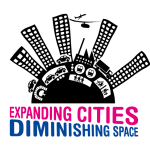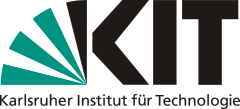
|

|

|
|
|
EXPANDING CITIES – DIMINISHING SPACE Are “Smart Cities” the solution or part of the problem of continuous urbanisation around the globe? The world’s total population is expected to hit the 10 billion point in the 2060s, more than 70 % living in urban areas. Cities are not only growing in population, but are expanding in area. Even with constant number of inhabitants there is a demand for more space. In many cities the demand of floor space per capita for housing is still growing, on the one hand due to higher living standards, on the other hand also as a result of changes in social structure resulting in high percentages of single person households. Also transport infrastructure, industrial zones, shopping centres, logistics centres, event and leisure facilities etc. consume additional space. As a consequence cities also grow into 3rd dimension: “up into the sky” and “going underground”. Many cities kind of expand in time, become “cities that never sleep”, extending their urban activities to 24 hours per day all the year round – 24/365. Even in countries and regions with constant or declining population numbers, it is still the cities that attract people. While the “hunger” in the literal sense for food and resources is growing, the “spaces in between”, especially agricultural land, but also natural retreats and buffer zones are diminishing. These aspects of city expansion do not only lead to massive changes all over the world, they also arise multiple challenges, chances and risks which have to be dealt with in planning processes. Current projections indicate that during the next decades the space occupied by cities will be more than three times the amount of today’s urban areas. This leads to a loss of agricultural and green spaces as well as to huge growth of urban population. The majority of the world’s population is already living in urban settlements. Not only megacities like in China, India, parts of Africa and Latin America are growing fast, but also small- and medium-sized cities are gaining population rapidly. So on the one hand there is the threat that the permanent demand for more space leads to a number of consequences such as scarcity of resources, infrastructural bottlenecks, pollution and devastation of land or social conflicts. Questions arise on how to deal with these problems at short notice, and what has to be done to find solutions to these challenges thinking in long-term strategies – the challenges and problems seem huge. On the other hand more and more unprecedented (urban) technologies are available to monitor and manage cities. Monitoring is as well done by remote sensing in stunning precision, and by extensive sensor networks in (almost) real time. Smart urban technologies promise a contribution to the solution of multiple challenges we are facing in cities. However, these technologies are a precondition for the management and also for the growth of bigger and bigger urban agglomerations. Is this development sustainable? How resilient are huge urban systems based on highly complex technology? An essential aspect is to overcome “disciplinary approaches” and having a holistic view of the city – an approach that urban planners claim to have been using forever. With all the technology in focus of course the goals of sustainability and resilience remain as important as they have always been. Cities are mainly about people and not about technology, so it is still “quality of life” that should be in focus. REAL CORP 2018 is going to show the current state of the art as well as to present projects and approaches for the use of future technology. |
 |
 |
 |
||||||||
 |
 |
|||||||||
 |
 |
 |
 |
 |
 |
|||||

